 Last additions - Nagahama 長浜市 Last additions - Nagahama 長浜市 |

Jul 11, 2009
|
|

Jul 11, 2009
|
|

The kabuki boys are placed on the hikiyama floats.Jul 11, 2009
|
|

Jul 11, 2009
|
|

The next kabuki play started on another hikiyama. Amazing how a boy can look so feminine.Jul 11, 2009
|
|

This hikiyama is shaped like a boat.Jul 11, 2009
|
|

Jul 11, 2009
|
|

Jul 11, 2009
|
|

Jul 11, 2009
|
|

Festival bannerJul 11, 2009
|
|

Jul 11, 2009
|
|

Jul 11, 2009
|
|

The hikiyama floats were then pulled into position for the day's first kabuki performances.Jul 11, 2009
|
|

Jul 11, 2009
|
|

Steering the hikiyama from behind.Jul 11, 2009
|
|

The kabuki boys for each hikiyama float proceed to the shrine, headed by a boy holding a sacred staff with zigzag paper.Jul 11, 2009
|
|
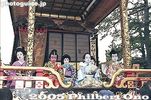
Jul 11, 2009
|
|

Jul 11, 2009
|
|

Jul 11, 2009
|
|

Jul 11, 2009
|
|

Kabuki performance in the shopping arcade.Jul 11, 2009
|
|

Jul 11, 2009
|
|

A boy writes with a brush with his mouth.Jul 11, 2009
|
|
|

Jul 11, 2009
|
|

Jul 11, 2009
|
|

Shedding real tears...Jul 11, 2009
|
|

Jul 11, 2009
|
|

Pulling the boat float from the shrine.Jul 11, 2009
|
|

Jul 11, 2009
|
|

Jul 11, 2009
|
|

This hikiyama is coming through the shopping arcade.Jul 11, 2009
|
|

This and the following pictures were taken in another year (not in 2009).Jul 11, 2009
|
|

Tapestry may have a western design.Jul 11, 2009
|
|

Jul 11, 2009
|
|

Jul 11, 2009
|
|

Jul 11, 2009
|
|

Jul 11, 2009
|
|

Jul 11, 2009
|
|

If you missed the performance at the shrine, you can see the same performance later in the shopping arcade or at the Otabisho.Jul 11, 2009
|
|

Jul 11, 2009
|
|

After the kabuki boys, processions of Naginata sword bearers also proceed to Nagahama Hachimangu Shrine.Jul 11, 2009
|
|

Jul 11, 2009
|
|

Men wearing sumo aprons also arrive at the shrine.Jul 11, 2009
|
|

Jul 11, 2009
|
|
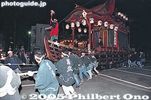
Jul 11, 2009
|
|

Jul 11, 2009
|
|

Jul 11, 2009
|
|

Jul 11, 2009
|
|

Jul 11, 2009
|
|

Jul 11, 2009
|
|

Jul 11, 2009
|
|

Jul 11, 2009
|
|
|

Jul 11, 2009
|
|

Jul 11, 2009
|
|
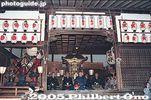
Jul 11, 2009
|
|

Jul 11, 2009
|
|

Jul 11, 2009
|
|

Jul 11, 2009
|
|

Jul 11, 2009
|
|

Fine art work on the hikiyama's ceiling.Jul 11, 2009
|
|

Jul 11, 2009
|
|

Jul 11, 2009
|
|

Jul 11, 2009
|
|

Jul 11, 2009
|
|

Jul 11, 2009
|
|

Jul 11, 2009
|
|

Jul 11, 2009
|
|

Jul 11, 2009
|
|

Carvings on a Nagahama hikiyama float.Jul 11, 2009
|
|

Jul 11, 2009
|
|

Jul 11, 2009
|
|

Jul 11, 2009
|
|
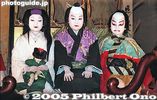
Jul 11, 2009
|
|

Jul 11, 2009
|
|

Jul 11, 2009
|
|
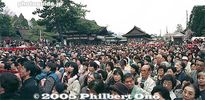
Large crowd watching kabuki by boys at Nagahama Hachimangu Shrine.Jul 11, 2009
|
|

Naginata sword bearers standby near the hikiyama floats.Jul 11, 2009
|
|

A ceremony is conducted before the kabuki plays started.Jul 11, 2009
|
|
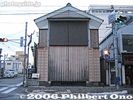
Hikiyama float storehouse.Jul 11, 2009
|
|

He's such a good actor that he shed real tears.Jul 11, 2009
|
|

Jul 11, 2009
|
|

Jul 11, 2009
|
|

The sail of the boat float almost got caught on a tree branch as it was moved.Jul 11, 2009
|
|

Otemon arcadeJul 11, 2009
|
|

Sanbaso dancer is the first to perform.Jul 11, 2009
|
|

The crowd watches the final kabuki performance starting at around 1:30 pm.Jul 11, 2009
|
|

Nagahama hikiyama floats at the Otabisho. The building on the right houses the mikoshi portable shrine.Jul 11, 2009
|
|

Jul 11, 2009
|
|

Jul 11, 2009
|
|

Jul 11, 2009
|
|

Jul 11, 2009
|
|
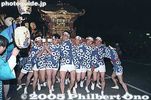
Jul 11, 2009
|
|

Jul 11, 2009
|
|
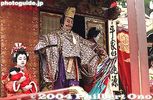
Jul 11, 2009
|
|

Jul 11, 2009
|
|

Jul 11, 2009
|
|

Jul 11, 2009
|
|

Portable shrine at the Otabisho.Jul 11, 2009
|
|

Arriving at Nagahama Hachimangu Shrine. People are not allowed to cross in front of this procession.Jul 11, 2009
|
|

Poster for the 2009 Nagahama Hikiyama Festival. For the basis festival schedule, also see my blog post.Jul 11, 2009
|
|

These pictures were taken on April 15. In the morning, all the kabuki actors proceed to Nagahama Hachimangu Shrine, arriving by 8:30 am.Jul 11, 2009
|
|

The Nagahama Hikiyama Matsuri's main highlight are boys age 5 to 12 performing kabuki plays on a few ornate floats at Nagahama Hachimangu Shrine and other locations in central Nagahama. MAPJul 11, 2009
|
|

HydrangeasMay 18, 2009
|
|
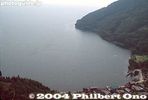
May 18, 2009
|
|

At the top of the Oku Biwako Parkway road is a lookout point.May 18, 2009
|
|

A few pretty good views from the top.May 18, 2009
|
|

May 18, 2009
|
|
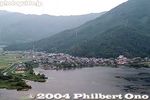
May 18, 2009
|
|

View from Oku Biwako ParkwayMay 18, 2009
|
|

One entrance to Oku Biwako Parkway is at Sugaura. It's not a toll road. The most trying part of bicycling around Lake Biwa. MAPMay 18, 2009
|
|

May 18, 2009
|
|

May 18, 2009
|
|

May 18, 2009
|
|

View from Oku Biwako ParkwayMay 18, 2009
|
|

But the views can be marvelous. There is an alternate and less strenuous bicycling route behind the mountains, but there's no scenery like this.May 18, 2009
|
|

There's a large parking lot at the top.May 18, 2009
|
|

May 18, 2009
|
|

May 18, 2009
|
|

May 18, 2009
|
|

Looking at Sugaura in Nishi-Azai.May 18, 2009
|
|

May 18, 2009
|
|

They pulled the floats to the Chawan Matsuri no Yakata museum festival grounds to be displayed. The rest of the procession headed back to Niu Shrine where they performed the Chigo dances again from 4:30 pm. Most people left the festival by 4 pm.May 06, 2009
|
|

Odaiko large taiko drummer 大太鼓May 06, 2009
|
|

May 06, 2009
|
|

At 1:45 pm, the lunch break was over and the three floats proceeded down the road and back. This was the main (but short) course for the float procession and a major photo op in front of the museum.May 06, 2009
|
|

May 06, 2009
|
|

Kimono worn by the Chigo-no-Mai and Sanyaku no Mai dancers. 三役の舞May 06, 2009
|
|
|

The Chigo-no-Mai dances were performed again. This time at Hachiman Shrine. This is the Miko-no-Mai Dance. 神子の舞May 06, 2009
|
|

Hana-yakko dancer at Chawan Matsuri, Yogo, ShigaMay 06, 2009
|
|

May 06, 2009
|
|
|

Inside Chawan Matsuri no Yakata Museum is a life-size replica of a festival float.May 06, 2009
|
|

Musical instruments used in the festival. On the upper left are flutes, below it are batons. On the right are a bell and below is the sasara bamboo whisk and rubbing stick. Drums at the bottom.May 06, 2009
|
|

Next to the museum was the festival grounds where they had food stalls and a low platform for dances performed at 12:30 pm.May 06, 2009
|
|

May 06, 2009
|
|

Another part of the museum was a replica of the living room and kitchen in a local farm house.May 06, 2009
|
|

Chawan Matsuri festival poster. The floats were to be displayed at the museum grounds until the next day on May 5, but rain canceled this plan.May 06, 2009
|
|

May 06, 2009
|
|

Musical instruments and costumes used in the festival are also displayed.May 06, 2009
|
|

You need some trained muscles and a flexible back to do what they are doing.May 06, 2009
|
|

View of the shrine grounds from the steps.May 06, 2009
|
|

The Chawan Matsuri festival was unique and very, very impressive. It was great.May 06, 2009
|
|

Niu Chawan Matsuri, Yatsu-kaeshi-no-Mai. 八つ換しの舞May 06, 2009
|
|

The floats had their bamboo support poles reattached to the lofty decorations.May 06, 2009
|
|

And there you see it. Look ma, no support poles! How is it supported like that...May 06, 2009
|
|

The Miko dancer used these bamboo leaves in his dance.May 06, 2009
|
|

Another festival highlight for me was seeing Shiga governor Kada Yukiko (wearing a light green jacket on the right) joining in to pull the float. I heard that women are actually not supposed to pull the float...May 06, 2009
|
|

Pulling out the first float out of Hachiman Shrine.May 06, 2009
|
|

Very impressive.May 06, 2009
|
|

At around 2:30 pm, the procession headed to Hachiman Shrine, a short walk away. Banner holders and hoko spear bearers behind them.May 06, 2009
|
|

Tapestry on a float.May 06, 2009
|
|

At Hachiman Shrine, which was much more spacious than Nyu Shrine, everyone danced again.May 06, 2009
|
|

At the end, the three festival floats are pulled into the shrine.May 06, 2009
|
|

Third dance called Ogi-no-Mai (Folding Fan Dance), he holds a folding fan and a gohei sacred staff. 稚児の舞 扇の舞May 06, 2009
|
|

The floats don't look too heavy to pull at all.May 06, 2009
|
|

They had special shuttle buses plying between Yogo Station and Hashimoto at the festival site. The bus had drawings by local school children.May 06, 2009
|
|

Next dance was called Yatsu-kaeshi-no-Mai. 八つ換しの舞May 06, 2009
|
|

Baton twirlers lead the twelve juni-no-yaku musicians. 棒振り(十二の役)May 06, 2009
|
|

May 06, 2009
|
|

Chawan Matsuri banners outside the museum.May 06, 2009
|
|

The three floats were lined up at the foot of a hill.May 06, 2009
|
|

May 06, 2009
|
|

May 06, 2009
|
|

Kodaiko drummers of the small taiko drum. 小太鼓May 06, 2009
|
|

Detaching the pole from Kira (notice the cut on his forehead).May 06, 2009
|
|

Second dance called Suzu-no-Mai.May 06, 2009
|
|

He holds a bell in his right hand and a gohei sacred staff with zigzag paper hanging. (御幣). 稚児の舞 鈴の舞May 06, 2009
|
|

The ropes are quite thin, making me think the float is not so heavy.May 06, 2009
|
|

At the end of the road at a bridge, they turned around and came back.May 06, 2009
|
|

Hana-yakko dancers with flower umbrellas. 花奴May 06, 2009
|
|

Shiga governor Kada Yukiko (wearing a light green jacket on the right) pulling a festival float at the Chawan Matsuri in Yogo. The man next to her was shouting, "Banzai!" 滋賀県知事 嘉田由紀子May 06, 2009
|
|

One of the food stalls sold mochi made from Tochi-no-ki Japanese horse-chestnuts grown in Yogo. They pick it during fall and store the chestnuts for the year. Unfortunately, they were all sold out by the time I got to their stall. 栃の木May 06, 2009
|
|

May 06, 2009
|
|

Nakaizashi-no-Mai. The same dances performed earlier at Niu Shrine are performed again at Hachiman Shrine. 中居指の舞May 06, 2009
|
|

Gov. Kada then ran to the first float and someone gave her a happi coat and headband which she put on. She was accompanied by the Yogo mayor (not pictured). 滋賀県知事 嘉田由紀子May 06, 2009
|
|

Tsuzumi drummers. Shiga governor Kada Yukiko (in a light green jacket) admire the procession as they arrive at Hachiman Shrine for the Chawan Matsuri in Yogo, Shiga on May 4, 2009. On her right is the mayor (black suit) of Yogo town. 滋賀県知事 May 06, 2009
|
|

Small elevated stage for sacred dances to be performed. It was about 3:15 pm.May 06, 2009
|
|

May 06, 2009
|
|

The climax of the festival was when they detached the bamboo support poles (called sasu サス) from the float decorations.May 06, 2009
|
|

Detaching the bamboo pole from the baboon balancing on only one hand.May 06, 2009
|
|
|

Shishi-no-Mai or Lion Dance. Acrobatic dance by boys. They were the crowd pleaser. You have to see the video to see what they did here.May 06, 2009
|
|

At around 4 pm, the procession left Hachiman Shrine to head back to Niu Shrine. At 4:30 pm, they danced again at Niu Shrine.May 06, 2009
|
|
|

Chawan Matsuri no Yakata Museum. Admission 300 yen. Visited the museum during the lunch break. 茶わん祭の館 MAPMay 06, 2009
|
|

May 06, 2009
|
|

May 06, 2009
|
|

The Hana-yakko dancers perform the Hanagasa Odori dance.May 06, 2009
|
|

Jutaro disguised himself as the daughter and put himself and a sword inside the offering box which was carried to the baboon's shrine as the human sacrifice offering. When the baboon opened the box, Jutaro fought and defeated the baboon.May 06, 2009
|
|

The dances ended at 11:30 am and they all started to leave the shrine in a procession headed for Hachiman Shrine with a lunch break at Chawan Matsuri no Yakata museum a short walk away. Conch shell blowers here.May 06, 2009
|
|

May 06, 2009
|
|

The Chawan Festival started when a potter in Yogo's Hashimoto area believed that he received his pottery skills from the gods and so gave an offering of pottery at Niu Shrine in appreciation. The festival started to be held by 1160.May 06, 2009
|
|

The three festival floats were parked in front of the Chawan Matsuri no Yakata Museum during the lunch break.May 06, 2009
|
|

Upside-down baboon is connected only by his left hand. How are all these objects suspended like that?? 岩見重太郎 狒狒退治の場May 06, 2009
|
|

The procession's final destination is Hachiman Shrine which is Niu Shrine's Otabisho (temporary resting point お旅所) before returning to Niu Shrine in the late afternoon..May 06, 2009
|
|

May 06, 2009
|
|

The two baton twirlers (bo-furi 棒振り) are members of the juni-no-yaku musicians. They are followed by the drummers of the large taiko drum.May 06, 2009
|
|

They are using bamboo support poles to keep it steady in the wind, but later they will disconnect the support poles to show that these decorations are free standing.May 06, 2009
|
|

Hana-yakko dancerMay 06, 2009
|
|

The floats also have musicians who play festival music called shagiri (しゃぎり). They use the flute, taiko drum, and bell.May 06, 2009
|
|

Two festival floats are ready to join the procession amid rice paddies.May 06, 2009
|
|

Baton twirlersMay 06, 2009
|
|

Chawan Matsuri Hana-yakko flower umbrella dancers 花奴May 06, 2009
|
|

The doll at the bottom is Oishi Kuranosuke, the leader of the 47 ronin who avenged their lord by capturing and beheading Kira who had taunted their master who drew his sword in the shogun's palace in anger and cut Kira's forehead.May 06, 2009
|
|

May 06, 2009
|
|

Niu Shrine. The shrine is too small for the floats to enter, so they were positioned in different locations near the shrine and scheduled to move at 11:30 am. 丹生神社 MAPMay 06, 2009
|
|

Near the entrance to Niu Shrine was one of the three festival floats (called dashi 山車 or hikiyama 曳山) named Juhozan (寿宝山). The festival started at 10 am with a Shinto ceremony at the shrine.May 06, 2009
|
|

Odaiko large taiko drummerMay 06, 2009
|
|

May 06, 2009
|
|

The procession was headed by a boy dancing with a naginata sword.May 06, 2009
|
|

Whoever designed the Hana-yakko costume, dance, and umbrella was quite brilliant.May 06, 2009
|
|

Most were boys, but a few were real girls. This is yet another great spectacle of the festival.May 06, 2009
|
|

The techniques used to makes these floats and decorations are top secret, known only by the hereditary craftsmen who make them.May 06, 2009
|
|

Odaiko drummer 大太鼓May 06, 2009
|
|

May 06, 2009
|
|

Pretty amazing.May 06, 2009
|
|

Nakaizashi-no-Mai. Although a total of six Chigo-no-Mai dances were performed this year, there are actually more dances which could not be performed due to a lack of dancers. 中居指の舞May 06, 2009
|
|

May 06, 2009
|
|

The men riding the floats are either musicians (flutes, drum, bell) or caretakers of the festival or float or tapestries.May 06, 2009
|
|

The crowd awaits the procession.May 06, 2009
|
|

The Juhozan float's decoration depicted the legendary warrior Iwami Jutaro (岩見 重太郎) who got rid of the baboon (top of the decoration) tormenting a village.May 06, 2009
|
|

They are connected by only a slither of whatever they are connected with, yet the whole thing doesn't fall. May 06, 2009
|
|

Notice the teacups and bowls and sword. They are intricately connected somehow. The kanji characters for "Chushingura" is in a frame lined with teacups at the bottom of the photo. 忠臣蔵の討ち入り場面May 06, 2009
|
|

Next was the Suzu-no-Mai (Bell Dance). He holds a bell in his right hand and a gohei sacred staff with zigzag paper hanging. (御幣). 稚児の舞 鈴の舞May 06, 2009
|
|

Following the procession, the floats are then pulled along.May 06, 2009
|
|

Chigo-no-mai dancersMay 06, 2009
|
|

The top character is Kira, depicted as the villain in Chushingura. Notice that it's supported only by his tiptoes. (Even without the bamboo pole support, it stands up that way.)May 06, 2009
|
|

The floats pass in front of the Chawan Matsuri no Yakata Museum which is one of the best places to view the festival. They arrived around 12:30 pm, then took a lunch break until 1:40 pm. The floats also have tapestries purchased in the 17th and 18th c.May 06, 2009
|
|

Hana-yako dancers pass by the floats.May 06, 2009
|
|

On the small shrine grounds was a small wooden stage where the musicians and dancers were standing by to perform after the Shinto ceremony was over.May 06, 2009
|
|

The Hana-yakko dancers supposed to be all local boys, but due to depopulation, now they include girls. They are intermediate and high school students.May 06, 2009
|
|

Then was the Ogi-no-Mai (Folding Fan Dance). 稚児の舞 扇の舞May 06, 2009
|
|

Yatsu-kaeshi-no-Mai. 八つ換しの舞May 06, 2009
|
|

Chawan Matsuri Hana-yakko flower umbrella dancers performing the Hanagasa Odori (花傘踊り). 花奴May 06, 2009
|
|

Shishi-no-Mai or Lion Dance. These Chigo-no-Mai dances were performed three times this day at different locations. So if you missed the first performance, you can still see them later in the day. May 06, 2009
|
|

This is Takatoki River where the festival participants purify themselves before the festival. The Chawan Matsuri supposed to be held every 3 years, but the lack of funds and people (young ones) has made it much less frequent. 高時川The area is quite rural, with many rice paddies. May 4 is a national holiday (Greenery Day) in Japan, during Golden Week, a string of national holidays in Japan amounting to a spring vacation. May 06, 2009
|
|

Way to Niu Shrine, near Hashimoto bus stop, about 15 min. by bus from Yogo Station. The Chawan Matsuri festival is held by Niu Shrine. The last time was in May 2003. The festival features three floats, a procession, and sacred dances and music.May 06, 2009
|
|

Next dance was called Yatsu-kaeshi-no-Mai. 八つ換しの舞May 06, 2009
|
|

The procession included these colorful dancers called Hana-yakko with flower umbrellas. 花奴May 06, 2009
|
|

The procession leaves the shrine.May 06, 2009
|
|

May 06, 2009
|
|

The doll at the bottom is Iwami Jutaro. There was a village where a female human sacrifice had to be offered to a big baboon. When the next victim was to be the village headman's daughter, Jutaro decided to get rid of the baboon. 岩見 重太郎 �May 06, 2009
|
|

The fantastic things about the festival floats is that they all have 10-meter high "balancing act" decorations depicting kabuki characters and legends. The decoration is made by a team of three craftsmen whose techniques are secret.May 06, 2009
|
|

The Chigo-no-Mai dances were to begin at 11 am. The musicians were 12 men and boys called Juni-no-yaku (十二の役) including this drummer of a large taiko drum (Odaiko).May 06, 2009
|
|

They were followed by the mikoshi portable shrine. Although it looks new, it was made in 1762.May 06, 2009
|
|

For the Ogi-no-Mai (Folding Fan Dance), he holds a folding fan and a gohei sacred staff. The Miko-no-Mai, Suzu-no-Mai, and Ogi-no-Mai trio of Chigo-no-Mai dances are also called Sanyaku-no-Mai (三役の舞). 稚児の舞 扇の舞May 06, 2009
|
|

Other members of the Juni-no-yaku musicians. On the left is the drummer of a small taiko drum (kodaiko). In the middle is a baton twirler called bo-furi (棒振り) in a bear costume. The boy on the right is a tsuzumi shoulder drum player.May 06, 2009
|
|

May 06, 2009
|
|

The two boys in front are sasara players who use a bamboo whisk rubbed with another notched bamboo stick as a musical instrument. The bamboo whisk looks very similar to the puili sticks used in hula dancing.May 06, 2009
|
|
| 3007 files on 12 page(s) |
 |
 |
8 |  |
 |
|